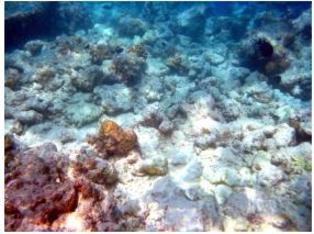New study reveals reef damage in Gulf of Mexico
A team of U.S. Geological Survey (USGS) and academic scientists are analyzing samples of coral and surrounding sediments from an area damaged near the Deepwater Horizon site in the Gulf of Mexico.
|
|
|
Gulf of Mexico coral [File photo] |
These samples, collected in December, are being used to investigate how and why the corals on these reefs died. There are many potential causes of coral death. This particular case may be related to the oil release from Deepwater.
Coral colonies may live for decades or centuries. Some causes are predation by other sea creatures such as Sea Stars.
Global warming is a potential cause as well as other human related activities.
The USGS revisited MC 338, the site where dead and dying coral were found covered by an unknown brown substance in November 2010. USGS ecologist Amanda Demopoulos, Ph.D., collected samples of animals living on the seafloor as part of an expedition led by Penn State University professor Charles Fisher, Ph.D., to study how deep-sea reefs in the Gulf of Mexico have been affected by the Deepwater Horizon oil spill.
Using push cores, scientists collected sediments at the damage site. They also suctioned the unknown brown material off of the corals. These materials are being sent for hydrocarbon analysis and used to study the sediment-dwelling animals using traditional taxonomy and new DNA-based techniques.
In a series of dives in the manned submersible Alvin, USGS ecologists collected tissue samples from corals known as Madrepora and gorgonians at the damaged reefs found during the November expedition. The samples are being used to examine the health of coral tissues including damage at the genetic level.
Cell structure in corals can change in response to stress, such as by increasing the number of mucous-producing cells. Corals may also up-regulate certain genes in response to stressors, so researchers are comparing the proteins expressed in certain genes of the corals found at the MC 338 site with coral from control areas.
Samples are being analyzed to test for the chemical signature of oil from the Deepwater Horizon spill, known as MC 252 oil. The full array of samples — including corals, the unknown substance coating them, surrounding sediments, and associated animals — make it possible for scientists to examine whether exposure to oil or dispersants was related to the damage observed on the site.
Ocean pollution can poison coral polyps. Pollution takes on many forms including oil slicks, pesticides and other chemicals, heavy metals, and garbage. In some cases, this may be simple poisoning and in other cases the pollutant may smother the coral.
Fertilizer runoff and untreated sewage introduce added nutrients to coastal ecosystems. These elevated nutrient levels promote algae growth. Unfortunately, high concentrations of algae or solid sewage can overwhelm and smother coral polyps. Under normal conditions, herbivorous fish and some invertebrates keep the algae population balanced.
As ocean temperatures warm due to climate change, incidences of coral bleaching may increase. Increased ocean acidification may also kill coral. Time and careful scientific study will determine the cause of the recent Gulf of Mexico coral death.
 0
0 







